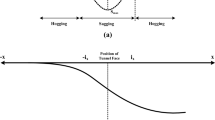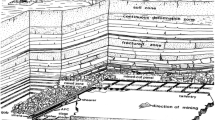Abstract
The current and continuously increasing demand for urban mobility implies introducing new sustainable and alternative systems to road transport. Where economic viability is established, metro lines are one of the most effective and least impactful solutions if the characteristics of the subsoil are appropriately considered and the construction phases are planned in such a way as to limit the induced ground deformations and not compromise the existing building stock. The excavation of tunnels in loose soils inevitably causes movements in the topsoil resulting in a combination of sagging and hogging, which in an urban environment must be controlled and minimized to avoid damage to the existing structures and infrastructure. Through the back-analysis of the Budapest (Hungary) Metro Line4, in this work, we propose an innovative tool where the design process is based on a GIS-BIM interaction, and the executive phase takes advantage of artificial neural networks capable of adjusting the design choices to the monitoring evidence. The environmental and geotechnical aspects are managed through the GIS Platform; then, 3D subsoil and structural models are developed following the BIM approach. After, the artificial neural network’s architecture is first constructed via a trial-and-error process which leads to selecting the best combination of input variables that better correlate to the measured volume loss. Then, real-time analysis is performed, and the transient effect is considered to simulate the excavation advance. The obtained results denote significant effectiveness in predicting the ground deformation and, thus, damage induced at the surface by mechanized excavation.
Access this chapter
Tax calculation will be finalised at checkout
Purchases are for personal use only
Similar content being viewed by others
References
Cao, B.T., Obel, M., Freitag, S., Mark, P., Meschke, S.: Artificial neural network surrogate modelling for real-time predictions and control of building damage during mechanised tunnelling. Adv. Eng. Softw. 149, 102869 (2020)
Kim, C.J., Bae, G.J., Hong, S.W., Park, C.H., Moon, H.K., Shin, H.S.: Neural network based prediction of ground surface settlements due to tunneling. Comput. Geotech. 28, 517–547 (2001)
Kimura T., Mair R.J.: Centrifugal testing of model tunnels in soft clay. In: Proceedings of the 10th International Conference on Soil Mechanics and Foundation Engineering, Stockholm, vol. 1, pp. 319–322 (1981)
Paolella, L., Salvatore, E., Spacagna, R.L., Modoni, G., Ochmanski, M.: Prediction of liquefaction damage with artificial neural networks. In: Proceedings of 7ICEGE (2019)
Paolella, L., Baris, A., Modoni, G., Spacagna, R.L., Fabozzi, S.: Liquefaction damage assessment using Bayesian belief networks. In: Gottardi, G., Tonni, L. (eds.) Cone Penetration Testing 2022 (2022). www.taylorfrancis.com. ISBN 978-1-032-31259-0, CC BY-NC-ND 4.0 license
Peck, R.B.: Deep excavation and tunneling in soft ground. State of the art report. In: 7th International Conference on Soil Mechanics and Foundation Engineering, Mexico City, pp. 225–290 (1969)
Ribacchi, R.: Recenti orientamenti nella progettazione statica delle gallerie. In: XVIII Convegno Nazionale di Geotecnica, Rimini (1993)
Rumelhart, D.E., Hinton, G.E., Williams, R.J.: Learning representations by back-propagating errors. Nature 323, 533–536 (1986)
Tang, Y., Xiao, S., Zhan, Y.: Predicting settlement along railway due to excavation using empirical method and neural networks. Soils Found. 59, 1037–1051 (2018)
Author information
Authors and Affiliations
Corresponding author
Editor information
Editors and Affiliations
Rights and permissions
Copyright information
© 2023 The Author(s), under exclusive license to Springer Nature Switzerland AG
About this paper
Cite this paper
Paolella, L., Ochmanski, M., Modoni, G. (2023). An Innovative Holistic GIS-BIM and Artificial Intelligence Based Approach to Manage Mechanized Tunnelling: The Back-Analysis of the Budapest Metro Line4. In: Ferrari, A., Rosone, M., Ziccarelli, M., Gottardi, G. (eds) Geotechnical Engineering in the Digital and Technological Innovation Era. CNRIG 2023. Springer Series in Geomechanics and Geoengineering. Springer, Cham. https://doi.org/10.1007/978-3-031-34761-0_31
Download citation
DOI: https://doi.org/10.1007/978-3-031-34761-0_31
Published:
Publisher Name: Springer, Cham
Print ISBN: 978-3-031-34760-3
Online ISBN: 978-3-031-34761-0
eBook Packages: EngineeringEngineering (R0)




